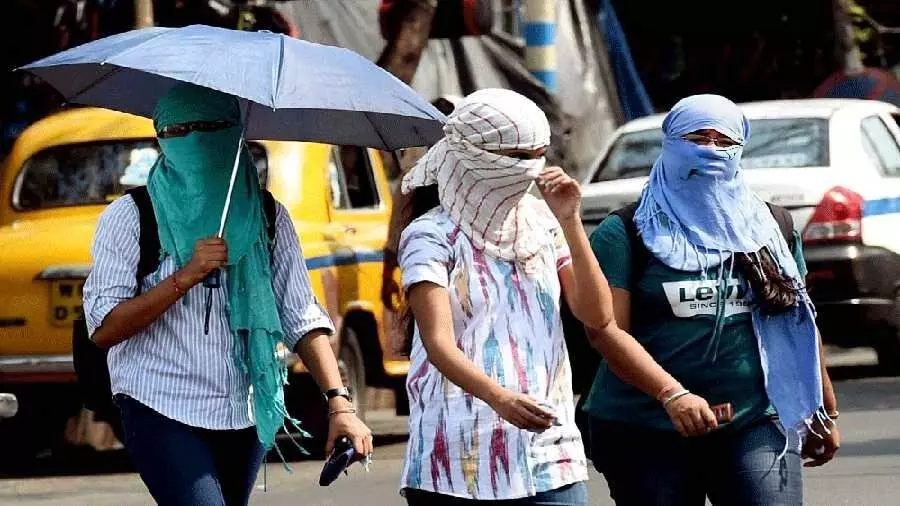Stay hydrated, stay cool: Health Ministry issues guidelines to check heat-related illnesses
Health Ministry issues guidelines for all states/ UT's on heat-related illnesses
By Newsmeter Network
Representational image
Hyderabad: Just a few days away from the month of March, many parts of the country have started witnessing unusual heat and substantial deviations from expected normal temperatures.
Given the seasonal outlook from India Meteorological Department (IMD) for March-May 2023, a ‘National Action Plan on Heat-Related Illnesses’ has been issued by the Union ministry of health and family welfare to all states and Union Territories to address the impact of the heat, management of cases arising because of it, and record maintenance and surveillance.
Here are the guidelines:
· From 1 March, daily surveillance on heat-related illnesses under the National Programme on Climate Change and Human Health (NPCCHH) will be conducted on the Integrated Health Information Platform (IHIP).
· The daily heat alerts shared by NPCCHH, NCDC, and the ministry of health and family welfare indicate a heat wave forecast for the next few days. States shall be disseminated promptly at district and health facility levels.
· The state health departments to continue efforts on sensitisation and capacity-building of medical officers, health staff, and grass-root level workers on heat illness, its early recognition, and management.
· Training manuals developed by the NCDC on these subjects are available and to be used for training. (https://ncdc.mohfw.gov.in/index.php)
· Health facility preparedness must be reviewed for the availability of adequate quantities of essential medicines, intravenous fluids, ice packs, ORS, and all necessary equipment.
· Ensuring availability of sufficient drinking water at all health facilities and continued functioning of cooling appliances in critical areas.
· Health facilities asked to increase resilience to extreme heat by arranging uninterrupted electricity for constant functioning of cooling appliances, installation of solar panels (wherever feasible), energy conservation measures, and measures to reduce indoor heat through cool/green roofs.
· Rainwater harvesting and recycling plants may also be explored for self-sufficiency in water.
Dos and Don’ts during summer
Here are the dos:
• Drink sufficient water whenever possible, even if you are not thirsty. Thirst is not a good indicator of dehydration.
• Carry drinking water when traveling.
• Use Oral Rehydration Solution (ORS) and consume homemade drinks like lemon water, buttermilk/lassi, and fruit juices with some added salt.
• Eat seasonal fruits and vegetables with high water content like watermelon, musk melon, orange, grapes, pineapple, cucumber, lettuce or other locally available fruits and vegetables.
• Wear thin, loose, cotton garments, preferably light-coloured.
• Cover your head: use an umbrella, hat, cap, towel, and other traditional headgears during exposure to direct sunlight.
• Listen to the radio, watch TV, and read the newspaper for local weather news. Get the latest update on the weather on India Meteorological Department (IMD) website https://mausam.imd.gov.in/
• Always stay in well-ventilated and cool places.
• Block direct sunlight and heat waves: Keep windows and curtains closed during the day.
Here are the don’ts:
• Avoid getting out in the sun, especially between noon and 3 p.m.
• Avoid strenuous activities when outside in the afternoon.
• Avoid cooking during peak summer hours. Open doors and windows to ventilate the cooking area adequately.
• Avoid alcohol, tea, coffee, and carbonated soft drinks or drinks with large amounts of sugar as these lead to loss of more body fluid or may cause stomach cramps.
• Avoid high-protein food and do not eat stale food.
• Do not leave children or pets in a parked vehicle. The temperature inside a vehicle could get dangerous.
Things for employers/workers
• Provide cool drinking water at the workplace and drink a cup of water every 20 minutes or more frequently to stay hydrated.
• Provide a shaded work area for workers. A temporary shelter can be created at the work site.
• Schedule strenuous and outdoor jobs to cooler times of the day, i.e., morning and evening hours.
• Increase the frequency and length of rest breaks for outdoor activities—at least every five minutes after 1 hour of labour work.
• Assign additional workers or slow down the pace of work.
• Train workers to recognise factors which may increase the risk of developing a heat-related illness so as to notice their own symptoms.
• Trained first-aid providers should be available.
• Pregnant workers and workers with a medical condition or those taking certain medications should discuss with their physicians about working in the heat.
Heat stress symptoms
• Dizziness or fainting
• Nausea or vomiting
• Headache
• Extreme thirst
• Decreased urination with unusually dark yellow urine
• Rapid breathing and heartbeat
Precautions
• Immediately move to a cool place and drink liquids. Water is best.
• Get help/medical attention.
• Measure your body temperature.
• Medical attention is needed if heat cramps last more than one hour, especially after exercise.
Helpline
Call 108/102 if you find someone has a high body temperature, is unconscious, or has stopped sweating.